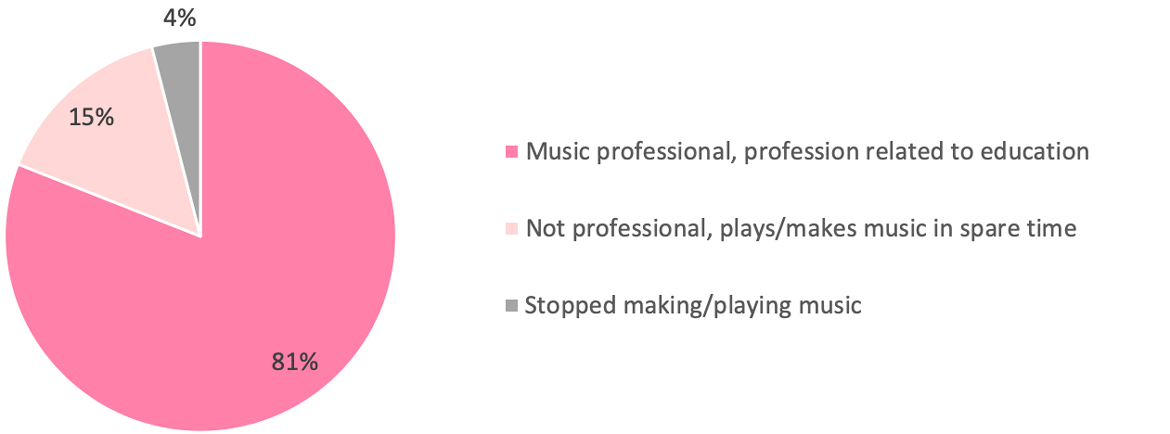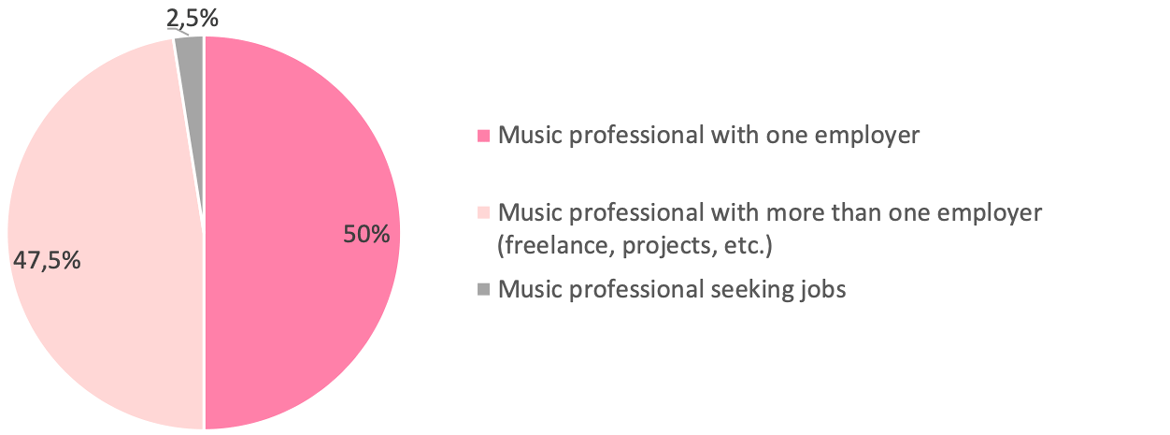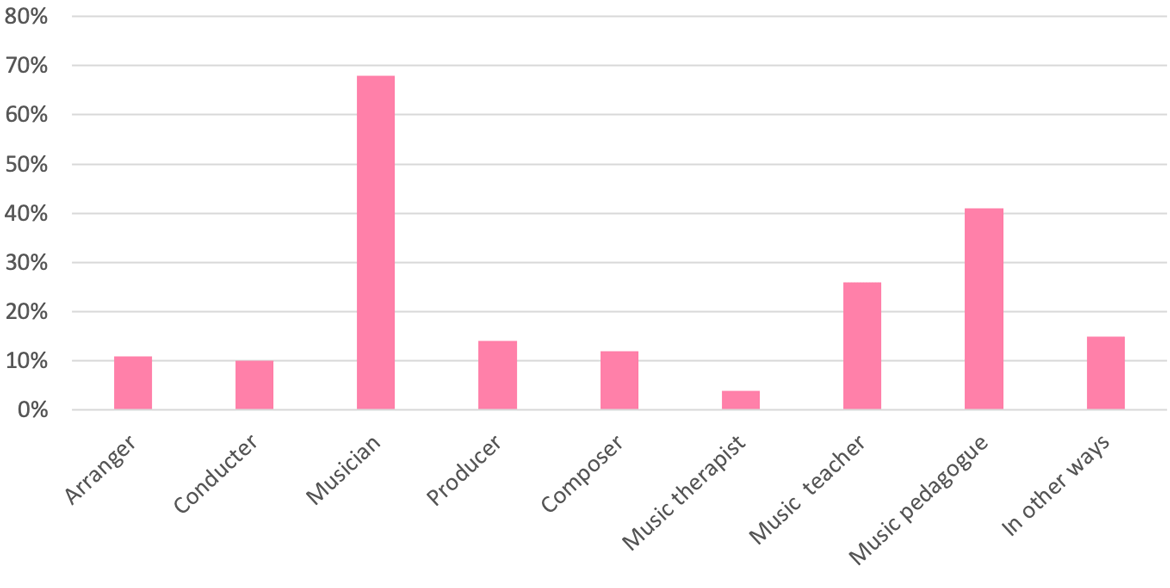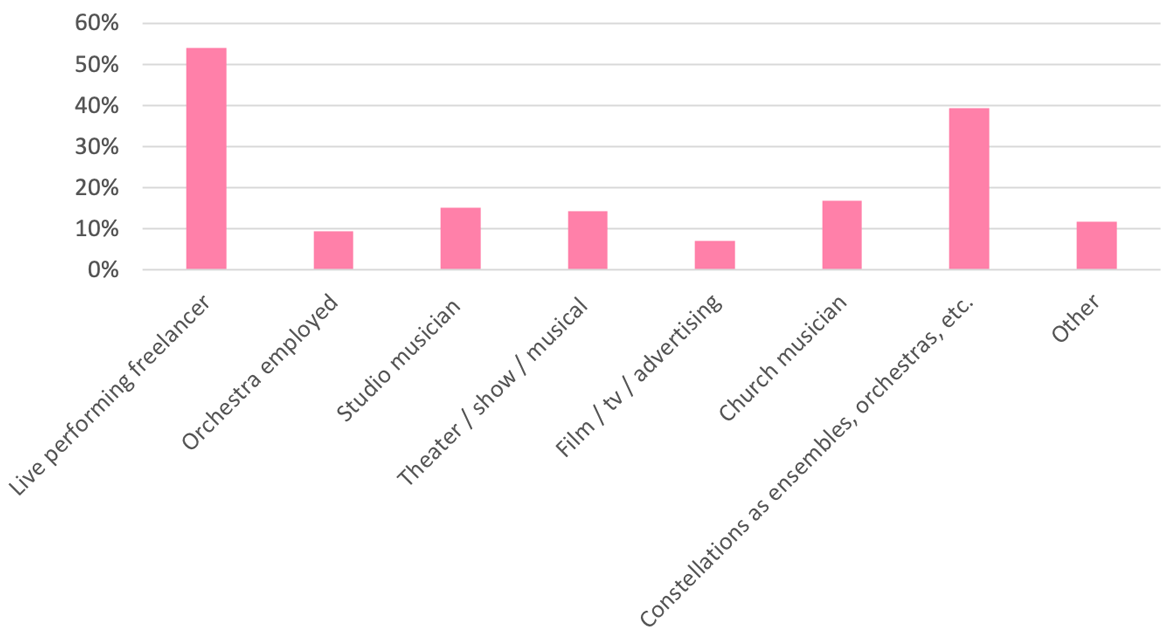After the studies
The programmes at KMH results in a bachelor's, master's or a teacher's degree. Many of those who are interested in applying, are wondering what happens after the studies, and whether the education leads to jobs. When we ask our alumni, the vast majority—eight out of ten—answer that they do work with what they are trained for.
In 2018, we invited our alumni to participate in a survey. 900 attended, and answered questions about the education and about their employment today.*
Relationship education / profession
A clear majority, 81 percent, state that they are professionals, and that their professional activities are directly related to their education at KMH. 15 percent have music making or teaching as a spare time activity, but not as a profession. Four percent say they have stopped completely making and/or playing music.

Employed or freelance
Half of those whose occupational activities are linked to the KMH education, currently have a permanent employment with one employer. 47.5 percent have several employers; as freelancers, within projects, fixed-term employment or similar.
2.5 percent of the respondents are unemployed.

Occupation—what will I become?
Those who answered that their profession is related to the KMH education, were also asked to indicate in which area they are working. It ws possible to mark several options. The majority, 68 percent, stated that they are musicians. Thereafter followed music educators, 41 percent, and music teachers, 26 percent.
Arranger and conductor was marked by around 10 percent each, producer and composer of just under 15 percent each. 4 percent marked music therapist as their profession.

What kind of musician?
Those who stated musician as their profession could also indicate in which industry, or in which context, they are musicians. Here, too, it was possible to mark several options. 54 percent indicated that they perform live as artists. 39 percent are active in ensembles, orchestras and the like. Studio musician, musician in theatres, shows and musicals, as well as church musician, were chosen by about 15 percent each. 7 percent selected film / television / advertising industry.

What do the alumni think about KMH?
The vast majority of the respondents, 85 percent, state that they would, or probably would, recommend training at KMH. When we ask what they appreciated most about their education, the most common answers was:
- The teachers.
- The individual teaching.
- The fellow students.
- The common teaching.
- Good opportunities for own practice in good, well adapted practice room.
* All respondents in the survey were more or less Swedish speaking.
